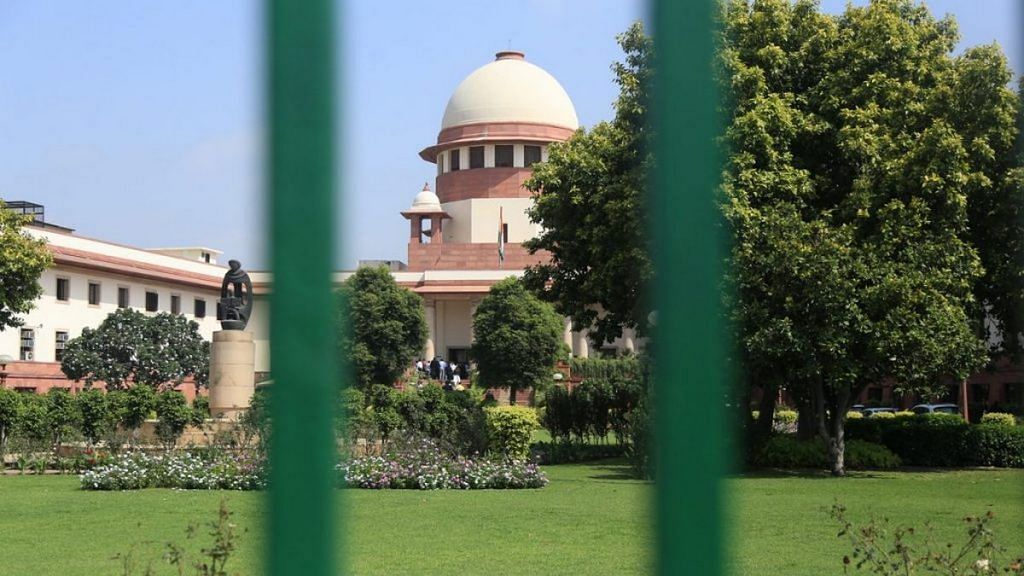New Delhi: Covid-19 has brought almost the entire world to a near-standstill, and India’s justice delivery system — rarely known for its speed even in the best of times — is no different.
Official data accessed by ThePrint shows that while the institution of new cases, both in the higher judiciary and subordinate judiciary, has come down to a trickle since the beginning of the nationwide lockdown on 25 March, the disposal rate has also been severely affected due to the forced closure of courts.
In the entire month of April, 82,725 cases were filed in India’s courts, while 35,169 cases were disposed of. Compare this to 2019, when the average number of cases filed per month was around 14 lakh (total number of cases 1.70 crore), while the average number disposed of per month was 13.25 lakh (total number of cases 1.59 crore).
The decline had begun in March, as the total number of cases filed was 8.8 lakh, and the cases disposed of figure stood at 6.2 lakh. The average for the first four months of 2020, thus, has come down to 39 lakh (an average of 9.75 lakh cases per month), while the disposal rate has fallen sharply to around 8.32 lakh cases per month, with a total of 33.33 lakh cases.
In all, there are about 3.23 crore cases pending in the 19,683 subordinate courts in the country, of which 90 lakh are civil cases and 2.32 crore are criminal cases
The situation in the high courts is no better. Currently, there are over 20.36 lakh civil cases, 13.54 lakh criminal cases and 14.25 lakh writ petitions pending in the various high courts in the country, making for a total of about 48.16 lakh cases.
Also read: Fans, mosquito nets, pool testing — the plan to get Delhi courts working after lockdown
Situation unlikely to improve soon
Sources in higher judiciary, including in the Supreme Court, admit that the situation is unlikely to improve anytime soon.
All courts, including the Supreme Court, high courts and district courts, have been operating in a highly restricted manner. Most courts have already decided to persist with the restricted functioning until at least 17 May.
“Only important and urgent cases are being heard now. But, even after courts open full-time, the backlog will take a long time to be processed,” said a senior official in the Supreme Court who did not want to be named.
Judicial appointments also hit
The process of appointment of judges too has been impacted by Covid-19 and the resulting lockdown.
Even before Covid-19, over 35 per cent posts in high courts were vacant — out of 1,079 sanctioned posts, 201 permanent ones and 184 additional judges’ positions were yet to be filled.
But now, the appointment of over 120 high court judges is pending with the Supreme Court collegium, while 50-odd fresh recommendations have been made by the various high court collegiums.
“Since February-end, very few recommendations have been considered and decided upon by the Supreme Court collegium. Even high courts aren’t making too many recommendations. All this will eventually result in delay in filling existing vacancies, as also an increase in the number of vacancies. But there’s little that can be done,” said another Supreme Court functionary.
The Supreme Court collegium, it is learnt, has to take a final call on recommendations made by the collegiums of high courts of Delhi, Jammu and Kashmir, Punjab and Haryana, the Allahabad High Court and the Madras High Court, among others.
Also read: From virtual benches to entry curbs — how SC and Delhi HC will work after lockdown
